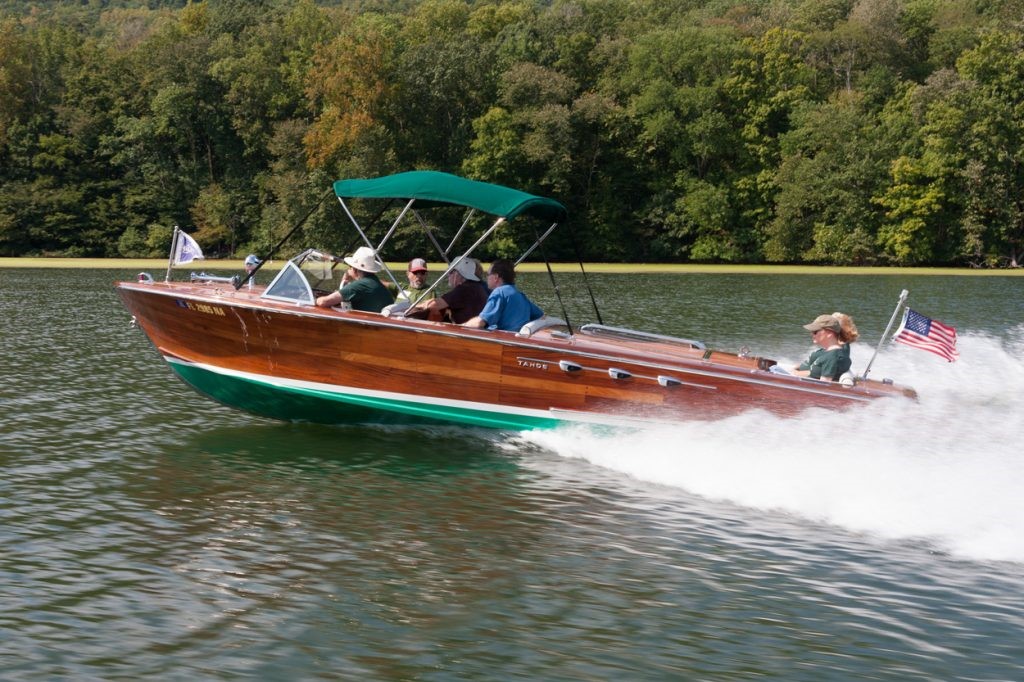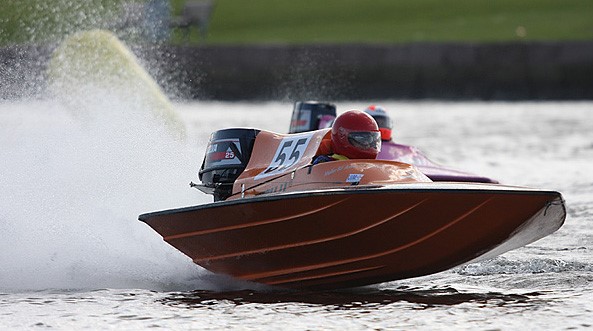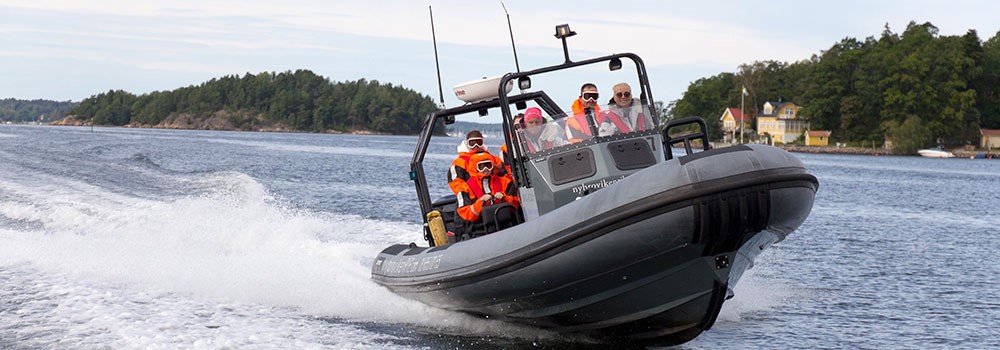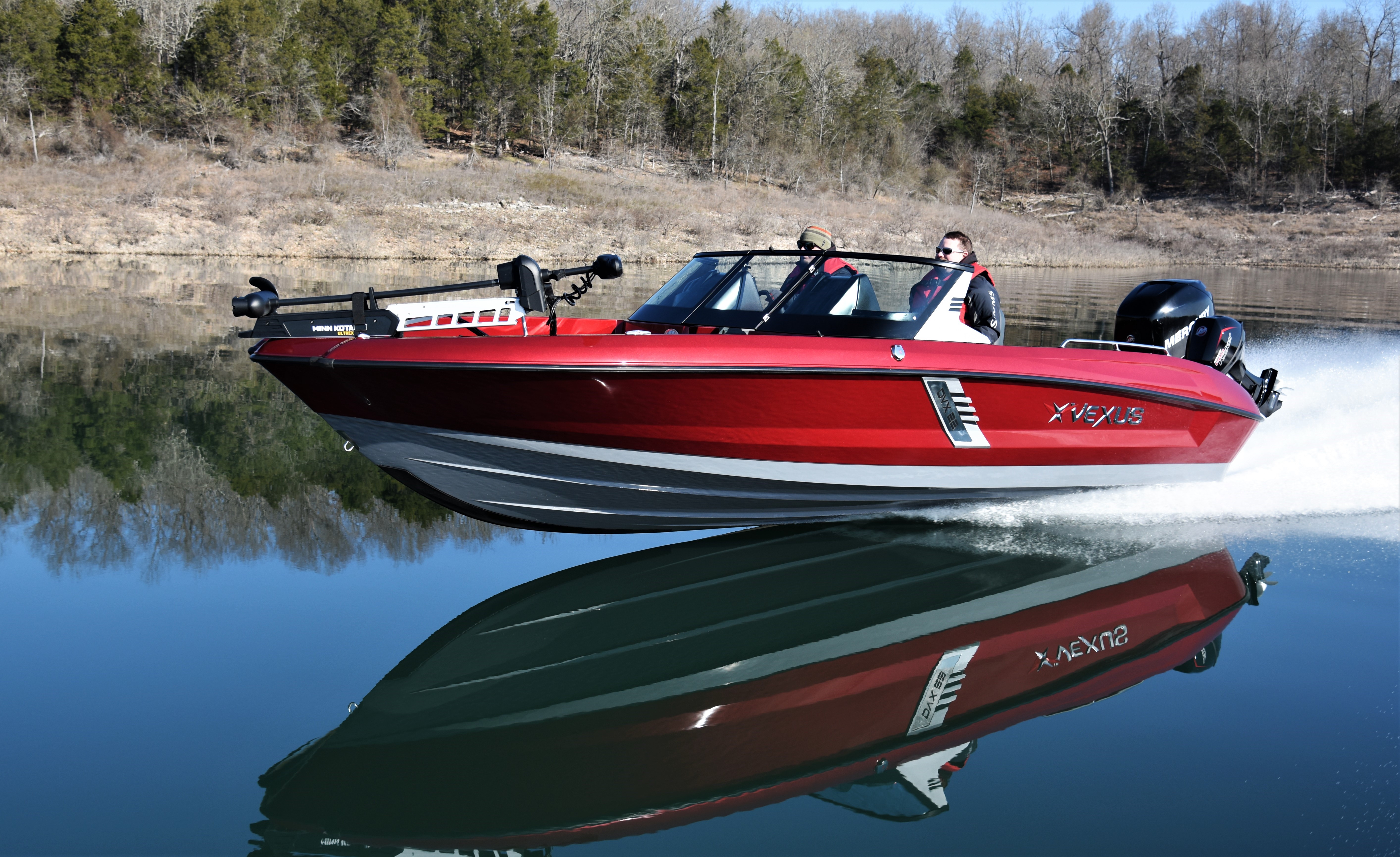Spray Rails and Chines
By Dag Pike
Where it all began
The original deep-vee hulls had smooth bottom panels with these sloping bottom panels meeting up with the topside and that was it. It was not long before designers started to fine-tune the deep vee so that today we see a wide variety of spray rails and chines, which are essentially flat surfaces added to the hull. It seems that every designer has their own thoughts about where to place these items on the hull, as well as their size and shape.
The spray rails and the chines that are a feature of all deep-vee hulls these days are fitted to fine-tune the performance of the hull. They are one of the main ways in which designers can put their individual stamp on the hull and vary the performance and the comfort that the hull can offer. There are so many variations in the design of these features. An understanding of how they work will perhaps give a better appreciation of the merits of various hull designs.
The straightforward deep-vee where the smooth bottom panels meet the smooth topsides would work but it could lack stability when underway. To improve the situation, the chine was introduced at the point where the bottom meets the topsides. Instead of directly meeting the vertical topsides, the angled bottom panels flatten out into a narrow horizontal strip at the meeting point. This strip serves two main purposes, firstly to direct the water flow coming away from the hull out clear of the hull but also to generate additional lift. The chines towards the bow will be the area where they do most of their work in deflecting the water away from the hull whilst it will be these flat surfaces further aft that will generate the extra lift to both help the boat onto the plane and to help stabilize the hull.
Why on the bottom?
Because the chines are located at the extremity of the hull bottom, they will have the maximum effect in preventing the hull from heeling over. If the hull heels then the flat surface of the chine becomes an inverted vee, and this generates even more lift on the downside of the hull so stability is assured. This stabilizing effect combined with that of persuading the water to flow cleanly away from the hull to reduce the frictional resistance makes a significant improvement to the performance of the hull.
The standard chine is horizontal when the boat is upright and over the years that has been shown to work well. It gives the water flowing away from the hull a relatively easy path away from the hull whilst at the same time generating lift. If the boat is heeled then that angle of the chine becomes an inverted vee, generating even more lift to help keep the boat upright. Now we are seeing some of these chines having this downward angle built into the shape so that there is an inverted vee even when the boat is upright, which of course means that the water flow has to change direction through a considerable angle.
I am a great believer in giving the water coming away from the hull as an easier flow path as possible in order to produce a comfortable ride. If this reverse angle increases, then the water has a significant change in its flow path direction and that it what creates a harsh ride. So, it’s easy to see the designers’ dilemma, he wants the lift generated by the chine, but he also wants the boat to have a soft and cushioned ride. This explains why we are now seeing chines not only with a varying width along its length but also with a varying angle built in so that the characteristics of the chine and its effect on the ride can be varied along its length.
All smooth rides begin at the bow
So at the bow where the chine mainly works to deflect the spray away from the hull but also to help prevent the bow from burying in following seas you might find quite a narrow chine or as I have seen in some cases a chine with a softer angle rather than horizontal. This chine then changes to a horizontal chine perhaps halfway along the hull where the lift might be required to increase and then changes again aft into a reverse chine in the area where the chine remains underwater and so there is less chance of wave impact.
Then the designer must consider the width of the chine because it is obvious that the wider the chine the better it will provide lift but also the more severe the impact in waves. On one of our trans-Atlantic record boats that had to carry a heavy load of fuel the chine was very wide to generate the lift required but we were conscious of this large flat surface every time we hit a wave and the ride was very harsh. So again a balance has to be struck and this can be helped by the angle of the chine. One solution that has been used to good effect is to have a double chine, one just above the other so that the flat surface area is broken up and this can help to cushion the ride whilst at the same time having the same surface area.
It all comes down to spray
Now we come to spray rails, which perform a similar function to chines in some ways but lower down on the vee of the hull on the angled bottom panels. Here these mini chines persuade the water to peel away from the hull at the earliest possible moment so that the water has the minimum amount of contact with the hull surfaces. This will reduce the frictional resistance and they also serve to help keep down the spray, hence their name. A further function as they run down the length of the hull is to improve the directional stability of the hull. On very fast boats where the chine may come clear of the water, the spray rail acts as a secondary chine to help stabilize the hull at speed.
As with chines, there are a lot of thoughts about where to place the spray rails. Some have them just in the forward half of the boat, while on the other, they run the length of the hull. Like the chines, the size and shape of the spray rails can have a significant effect on the ride of the boat. Too narrow and they will not work effectively, too wide and they will give a harsh ride. With water jet propulsion, and to a certain extent with pod drives, the positioning of the spray rails is quite critical so as not to interfere with the flow of water into the propulsion system. With pods, they can help to stabilize the hull.
The vee of this hull did not have any spray rails at all and this meant that the inflatable tubes were dragging in the water at speed. We fitted just a single spray rail along the hull at about halfway up the vee panel. The result was dramatic, with the tubes riding clear of the water and the speed increased by over 5 knots. And that was with just a single spray rail.
I have seen some hulls with a multitude of spray rails fitted and that can also have a negative effect. Fitting a spray rail means that the area of the hull surface in contact with the water increases, which will increase the frictional resistance with the water. If you have a lot of spray rails, perhaps five or six on each side, this increase in resistance will actually slow the boat down. Like everything to do with hull design, the designer has to find a balance. Spray rails and chines are one of the ways he/she can use to fine-tune the performance.
The hull efficiency
The basic function of these two components is to help stabilize the hull and make it more efficient, but the design of these features varies considerably from boat to boat. Wide chines and spray rails with a large horizontal area would obviously be the most efficient in terms of generating lift but then you would get slamming on the flat surfaces and a harsh ride.
Some chines are even angled down at their outer edges to make them more effective. But these will give the water a torturous path away from the hull and increase the slamming and the rough ride. The designer has to find a compromise that works effectively but which does not give too harsh a ride. Every designer has his own thoughts about the best way to achieve the desired results, which is why you see so many variations of design. But there is no getting away from the fact that the larger the horizontal area, the harsher will be the ride.





